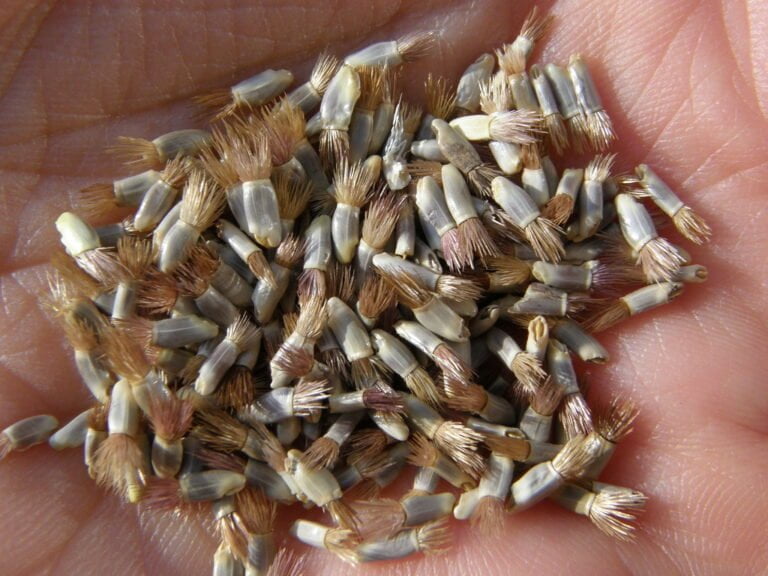Guide to Stopping a Broody Hen
When dealing with a broody hen, it’s important to remove eggs from her nest regularly. Avoid lifting her. Create distractions in the nesting area and use fake eggs to deter her. Handle aggressive behavior cautiously. Implement strategies to minimize triggers and provide distractions. Seek help from experienced poultry keepers or veterinarians if needed. Managing a broody hen requires patience and consistency. With proper care and attention, you can discourage broodiness and maintain a peaceful flock.
Signs of Broody Behavior
When observing a broody hen, you may notice distinct signs of broody behavior that indicate her readiness to sit on eggs and incubate them. Broody hens exhibit unique behaviors such as puffing up their feathers, flattening their bodies over the eggs, and emitting growling sounds if disturbed. These actions are clear indicators that a hen has entered a broody state and is prepared to nurture a clutch of eggs.
One of the key signs of a broody hen is her persistent presence in the nesting area, particularly at night. Broody hens will often resist leaving the eggs unattended, showing a strong attachment to the nesting spot. Additionally, broody hens may gather not only real eggs but also fake eggs, golf balls, or even imaginary eggs to create a full nest. This behavior stems from their instinct to incubate and hatch eggs.
As broody hens focus on nurturing their clutch, there is a noticeable decline in egg production. The hen’s primary goal shifts from laying eggs to caring for the ones in her nest. This shift in priorities is further evidenced by a decrease in appetite and sometimes even aggressive behavior towards those who try to approach the nest. Understanding these signs of broody behavior is essential for effectively managing broody hens and their nesting habits.
Removing Eggs From Nest
To effectively manage a broody hen’s nesting habits and break the broody cycle, one practical step is gently removing eggs from the nest without disturbing the hen. Here are some key points to keep in mind when removing eggs from the nest:
- Gently Reach Under the Hen: When retrieving eggs, it’s crucial to gently reach under the broody hen without lifting or pushing her. This approach helps in avoiding unnecessary stress to the hen and maintains a level of comfort during the process.
- Observe the Hen’s Reaction: Different hens may respond differently when their eggs are removed. While some hens may hop off the nest when eggs are taken, others may exhibit signs of distress or pout. It’s important to observe the hen’s behavior and react accordingly to safeguard her well-being.
- Regular Egg Removal: Consistently removing eggs, ideally every other day, can prevent the hen from settling back into broodiness. This practice disrupts the nesting behavior and helps in breaking the broody cycle effectively, reducing the chances of the hen returning to a broody state.
Clearing Nesting Area
I’m going to share some important points on clearing out the nesting area to discourage broodiness in hens. To start with, remove any nesting materials that the broody hen has gathered, making sure to block access to the nest. Next, guarantee the nesting area is uncomfortable by removing any soft bedding and keeping it well-lit and ventilated to deter nesting behavior. To end, create distractions in the nesting area to divert the broody hen’s attention away from sitting on the nest.
Remove Nesting Materials
Clear out all nesting materials such as straw, hay, or shavings from the nesting box to discourage the broody hen from nesting. When implementing a broody breaker, it is important to remove any soft or cozy items that the hen could use to create a comfortable nest. Make sure the nesting area is bare and uncomfortable to deter nesting behavior effectively. To further discourage the hen from returning, clean and sanitize the nesting box to eliminate any lingering scents that may attract her back. Keeping the nesting area clear and uninviting will help prevent the broody hen from resuming her nesting activities.
- Remove all nesting materials like straw, hay, or shavings.
- Eliminate soft or cozy items from the nesting box.
- Make sure the nesting area is bare and uncomfortable.
Block Access to Nest
Blocking the hen’s access to the nest involves physically preventing her from returning to the nesting area. By clearing out all nesting materials such as straw, hay, or bedding from the nesting area, you disrupt the broody hen‘s routine and nesting behavior. This action interrupts her broody cycle, making it less likely for her to continue exhibiting broody tendencies. Removing the cozy environment encourages the hen to find a new roosting spot and discourages her from returning to the nest. Keeping the nesting area free of comfortable materials is a simple yet effective way to prompt the broody hen to resume normal activities and break the cycle of broodiness.
Using Fake Eggs as Deterrent
Using fake eggs as a deterrent for broody hens can be a helpful strategy to discourage broody behavior in nesting hens. Here are three key points to keep in mind when using fake eggs:
- Importance: While fake eggs can help make the nest undesirable for brooding, some hens may not be fooled and continue to exhibit broody behavior. It’s vital to understand that using fake eggs may not always be effective in stopping a broody hen. Monitoring the hen’s response to the fake eggs is essential to determine if this method is working to deter broodiness effectively.
- Placement: Placing the fake eggs strategically within the nesting area is vital. Make sure they are positioned where the hen can easily see and interact with them. By replacing real eggs with fake ones, you may disrupt the hen’s brooding instincts and discourage her from sitting on the nest continuously.
- Monitoring: Consistent monitoring of the hen’s behavior is key. If the hen continues to display broody behavior despite the presence of fake eggs, you may need to explore alternative methods to address her broodiness effectively. Adapting and adjusting the approach based on the hen’s response is essential in managing broody behavior in hens.
Dealing With Aggressive Behavior
When dealing with aggressive behavior in broody hens, it’s essential to remain calm and assertive. Wearing protective gear like long sleeves and gloves can help minimize any potential harm. Always approach the hen from the back to reduce the risk of confrontations.
Handling Pecking Behavior
Approaching a broody hen exhibiting pecking behavior requires caution and protective gear to guarantee your safety. When handling pecking behavior in broody hens, consider the following:
- Protective Gear: Wear long sleeves and heavy gloves to shield yourself from the hen’s pecks and scratches.
- Assistance: If dealing with a particularly aggressive broody hen, enlist the help of a friend to ensure safety for both you and the hen.
- Egg Removal: Reach under the hen from the back to remove eggs or discourage nesting behavior, preventing potential aggression and maintaining the hen’s health and well-being. Remember to remove eggs every other day to mitigate aggressive tendencies and promote overall health.
Addressing Territorial Aggression
To address territorial aggression in broody hens, implement strategies that focus on minimizing triggers and distractions from their nesting area to reduce aggressive behavior. When dealing with aggressive behavior, it’s important to approach the broody hen with caution, using protective gear such as gloves and long sleeves. Avoid sudden movements that may further agitate the hen. By removing potential triggers like loud noises or sudden movements near the nesting area, you can help decrease the likelihood of territorial aggression. Providing distractions such as treats or toys away from the nesting site can also help redirect the hen’s focus. Remember, patience and consistency are key when handling aggressive broody hens to ensure the safety of both the hen and yourself.
Managing Broody Hen
Address territorial aggression in broody hens by implementing strategies that focus on minimizing triggers and distractions from their nesting area to reduce aggressive behavior. When managing a broody hen’s aggressive behavior, consider the following:
- Wear Protective Gear: Utilize long sleeves and gloves to prevent injuries when handling aggressive broody hens.
- Have a Helper: Enlist someone to distract the broody hen while you remove eggs to decrease the likelihood of aggression towards you.
- Consistent Handling: Practice gentle and consistent interactions with the broody hen to help reduce her aggressive tendencies over time.
Seeking Assistance for Handling
When seeking assistance for handling a broody hen, connecting with experienced poultry keepers can provide valuable advice and insights. These seasoned individuals have likely encountered broodiness in their flock and can offer practical solutions based on their own experiences. Joining online forums or social media groups dedicated to poultry keeping is another excellent way to seek assistance with broody hen issues. These platforms provide a vast network of poultry enthusiasts who are willing to share their knowledge and provide support.
Attending local workshops or seminars on poultry care is also beneficial when dealing with a broody hen. Experts in the field often lead these sessions, offering valuable information on managing broodiness and other common poultry issues. Additionally, reaching out to a veterinarian specializing in poultry care can provide professional guidance tailored to the specific needs of your broody hen.
For more personalized help, consider hiring a poultry consultant who can assess your situation and provide customized advice for handling a broody hen. These professionals have extensive experience working with poultry and can offer in-depth guidance to address the broodiness effectively. By seeking assistance from a variety of sources, you can gather a range of perspectives and strategies to help manage your broody hen successfully.






